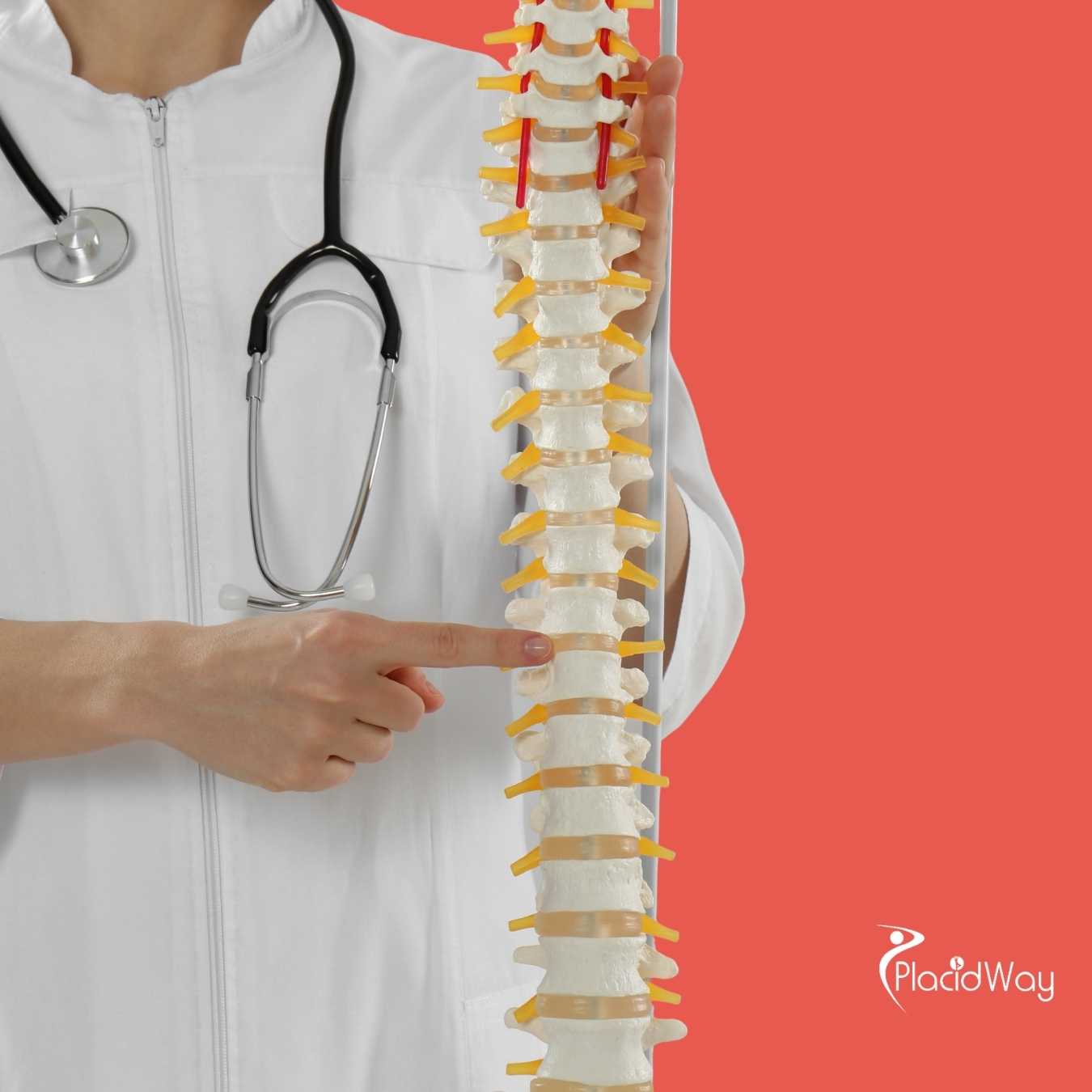The Real Cost of Stem Cell Therapy for Arthritis Relief
.png)
If you're living with the persistent pain and stiffness of arthritis, you've likely explored numerous treatment options, from medication and physical therapy to more invasive surgeries. Lately, stem cell therapy for arthritis has emerged as a promising avenue, sparking considerable interest for its potential to repair damaged tissues and reduce inflammation. However, one of the first questions that comes to mind for many considering this innovative treatment is, 'How much does stem cell therapy for arthritis cost?' It's a valid concern, as this regenerative medicine approach can represent a significant financial commitment. Understanding the various factors that influence the overall price is crucial for anyone evaluating this option.
This guide aims to demystify the financial aspects of stem cell therapy for arthritis, providing clear answers to frequently asked questions. We'll delve into average costs, what influences these figures, and what you can expect in terms of payment and insurance coverage. We'll also touch upon the considerations for those exploring medical tourism for more affordable arthritis treatment cost options, helping you make an informed decision about this cutting-edge approach to managing your joint pain and improving your quality of life.
How much does stem cell therapy for arthritis cost?
The financial outlay for stem cell therapy for arthritis can be a significant consideration for many patients. This price range accounts for a single joint treatment. For example, if you are treating both knees, the cost would likely be double the per-joint estimate. It's essential to understand that this is an average, and specific clinics, especially those known for their advanced facilities or highly specialized doctors, might charge more. Similarly, regions with lower operational costs may offer slightly more affordable options.
The quoted price usually includes the harvesting of cells (if autologous), processing, and the injection procedure itself. However, it might not always cover initial consultations, diagnostic imaging, follow-up appointments, or any rehabilitation services. Patients are encouraged to obtain a detailed breakdown of all costs associated with their proposed regenerative medicine cost treatment plan to avoid unexpected expenses.
What factors influence the cost of stem cell therapy for arthritis?
Understanding the variables that contribute to the overall arthritis treatment cost is crucial for prospective patients. These factors can create a broad spectrum of pricing:
- Type of Stem Cells Used:
- Autologous: Cells sourced from the patient's own body (e.g., bone marrow, adipose tissue) often involve an additional procedure for harvesting, which adds to the cost.
- Allogeneic: Cells sourced from a donor (e.g., umbilical cord blood or tissue) might have different processing and handling costs.
- Number of Joints Treated: Treating multiple joints simultaneously will naturally increase the total expense.
- Clinic and Physician Reputation: Highly specialized clinics and renowned physicians often command higher fees due to their expertise and success rates.
- Geographic Location: Healthcare costs vary significantly by region and country, impacting everything from facility fees to professional charges.
- Required Treatment Sessions: Some conditions may require a series of injections for optimal results, multiplying the initial per-session cost.
Beyond these, ancillary services like pre-treatment diagnostics (MRI, X-rays), post-treatment physical therapy, and medications can also add to the final bill. Always inquire about a comprehensive package price for your specific stem cell therapy for arthritis plan.
Is stem cell therapy for arthritis covered by insurance?
For most patients in countries like the United States, traditional health insurance plans do not cover the costs associated with stem cell therapy for arthritis. This is primarily because many stem cell treatments for musculoskeletal conditions are still considered experimental or investigational by regulatory bodies and insurance companies. They often require more long-term, large-scale clinical trials to establish definitive efficacy and safety for widespread acceptance.
Given this lack of coverage, patients should be prepared to cover the entire regenerative medicine cost themselves. It is always wise to contact your insurance provider directly to confirm their specific policies regarding stem cell treatments. While full coverage is rare, some insurance plans might partially cover initial diagnostic tests or follow-up physical therapy sessions, even if the core stem cell procedure is excluded. Some clinics understand the financial burden and offer payment plans or collaborate with medical financing companies to make the treatment more accessible.
What are the different types of stem cell therapy for arthritis?
There are several approaches to stem cell therapy for arthritis, each utilizing stem cells from different sources with varying characteristics:
- Bone Marrow Aspirate Concentrate (BMAC): This involves harvesting bone marrow, typically from the patient's hip bone, and then processing it to concentrate mesenchymal stem cells and other healing factors. The concentrate is then injected into the affected joint. This is an autologous treatment, meaning the cells come from the patient's own body.
- Adipose-Derived Stem Cells (ADSCs): These stem cells are harvested from the patient's own fat tissue, usually through a mini-liposuction procedure. Fat tissue is a rich source of mesenchymal stem cells, which are then concentrated and injected into the arthritic joint. Like BMAC, this is also an autologous treatment.
- Umbilical Cord Tissue-Derived Mesenchymal Stem Cells: These are allogeneic cells, meaning they come from a donor source – specifically, from discarded umbilical cord tissue after a healthy birth. These cells are known for their strong regenerative and anti-inflammatory properties and do not carry the risk of immune rejection, as they are "immune privileged."
Each type has its own advantages and may be chosen based on the patient's specific condition, the physician's expertise, and the desired treatment outcomes. The choice of cell source can also impact the stem cell therapy cost.
How effective is stem cell therapy for arthritis?
While stem cell therapy for arthritis is still evolving, a growing body of clinical evidence and patient testimonials suggest promising results. Many individuals who have undergone the treatment experience a significant reduction in chronic joint pain, improved range of motion, and enhanced overall quality of life. The stem cells work by potentially reducing inflammation, modulating the immune response, and fostering the regeneration of damaged cartilage and other joint tissues.
It is important to manage expectations, as results are not guaranteed for every individual. Factors influencing success include the stage and severity of arthritis, the specific joint affected, the patient's age and overall health, and the quality of the stem cell preparation and injection technique. While some patients experience dramatic improvements, others may see more modest benefits or require additional treatments. Consulting with a qualified specialist about realistic outcomes for your specific condition is essential for understanding the potential stem cell treatment effectiveness.
Are there risks or side effects associated with stem cell therapy for arthritis?
Like any medical procedure, stem cell therapy for arthritis carries some potential risks and side effects, although serious complications are rare, especially when performed by experienced practitioners in a sterile environment. Most side effects are mild and temporary:
- Injection Site Discomfort: Patients may experience temporary pain, swelling, bruising, or tenderness at the injection site or the site of cell harvest (for autologous procedures).
- Infection: There is a small risk of infection at the injection site, which is mitigated by strict sterile techniques.
- Bleeding: Minor bleeding or hematoma formation can occur.
More severe, but rare, risks can include allergic reactions (especially with allogeneic products, though rare due to immune-privileged status), nerve damage, or blood clots. It is crucial to choose a licensed and reputable clinic that adheres to strict safety protocols and uses high-quality, ethically sourced stem cells. Discussing all potential risks with your healthcare provider is an important step in your consideration of regenerative medicine.
What is the average cost of stem cell therapy for knee arthritis?
Knee arthritis is one of the most common applications for stem cell therapy, given the knee's weight-bearing function and susceptibility to cartilage degradation. The cost for treating a single knee typically aligns with the general per-joint estimates, usually ranging from $5,000 to $12,000. This knee arthritis stem cell cost may cover the complete procedure, including cell harvesting (if autologous), processing, and the injection itself.
Variations in pricing can occur based on the severity of the knee arthritis, with more complex cases potentially requiring more extensive preparation or higher cell counts, which could influence the price. Additionally, clinics offering comprehensive post-procedure care packages, including physical therapy or specialized follow-up, might have a higher overall fee. It is always recommended to get a transparent breakdown of costs specifically for your knee treatment plan.
Can I get stem cell therapy for arthritis abroad? (Medical Tourism)
Medical tourism for stem cell therapy for arthritis has become a viable option for many patients. The primary motivators for seeking treatment abroad include the significantly lower cost of procedures compared to countries like the United States, access to therapies not yet widely available or approved in their home country, and the ability to combine treatment with a vacation. This option allows patients to explore advanced regenerative treatments that might otherwise be financially prohibitive.
However, it is vital to approach medical tourism with thorough research and caution. While many international clinics offer high-quality care, it's crucial to verify their credentials, safety standards, and physician expertise. Understanding the regulatory environment of the destination country regarding stem cell therapies is also important. Always consider the total cost, including travel, accommodation, and potential follow-up care, when comparing international options for stem cell cost abroad.
Which countries offer affordable stem cell therapy for arthritis for medical tourists?
Several countries have emerged as leading destinations for medical tourism stem cell therapy, offering high-quality treatments at a fraction of the cost found in Western nations. These countries often have well-developed medical infrastructure and specialists experienced in regenerative medicine:
- Mexico: Known for its proximity to the U.S. and a growing number of reputable clinics.
- Costa Rica: Offers a combination of medical expertise and a beautiful recovery environment.
- Panama: Has established clinics that specialize in various stem cell applications, including arthritis.
- Ukraine: Offers advanced stem cell research and treatments, often at competitive prices.
- Asian Nations (e.g., South Korea, Thailand, India): These countries boast world-class medical facilities and experienced doctors, providing advanced arthritis treatment cost options.
The affordability in these regions often stems from lower operational costs, less stringent regulatory hurdles that can streamline treatment availability, and strong government support for medical tourism. However, prospective patients must conduct due diligence to ensure the chosen clinic adheres to international safety and quality standards.
What should I look for when considering stem cell therapy abroad?
Choosing to undergo stem cell therapy abroad requires careful planning and research to ensure both safety and effectiveness. Here are key considerations:
- Accreditation and Licensing: Ensure the clinic is officially licensed and, ideally, holds international accreditations (e.g., Joint Commission International - JCI) that signify adherence to high medical standards.
- Physician Credentials: Verify the qualifications, experience, and specialization of the doctors who will perform your procedure. Look for board certifications and extensive experience in regenerative medicine.
- Treatment Protocols: Understand the specific type of stem cells used, their source, and the exact procedure. Ask about the number of cells administered and any pre/post-treatment care.
- All-Inclusive Cost Breakdown: Request a detailed quote that includes all aspects: consultations, diagnostics, the procedure itself, medications, follow-up care, and potential rehabilitation. This helps prevent hidden fees.
- Safety and Ethics: Research the clinic's safety record, infection control protocols, and ethical guidelines regarding stem cell sourcing and application.
- Patient Testimonials and Reviews: Seek out independent patient reviews and testimonials to gain insights into other patients' experiences with the clinic and its staff.
- Communication: Ensure clear communication channels with the clinic, especially regarding language barriers and post-treatment queries once you return home.
Thorough investigation of these points will help you make an informed and safe decision regarding your stem cell cost abroad and treatment journey.
Ready to explore your options for managing arthritis pain and improving joint health? PlacidWay connects you with top-tier clinics and regenerative medicine specialists worldwide, offering personalized options for stem cell therapy for arthritis. Visit PlacidWay today to discover comprehensive solutions for your healthcare journey and take the first step towards a better quality of life.


.png)

-Package-in-Kuala-Lumpur,-Malaysia-by-FirstCell.jpg)







Share this listing